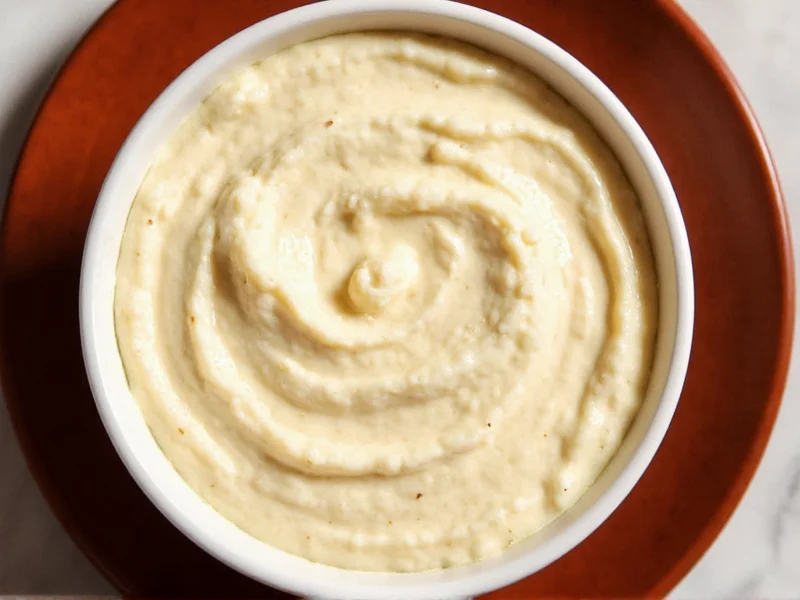Understanding the distinction between authentic chipotle aioli and potential mislabeled products is essential for home cooks and food enthusiasts. While Kraft Heinz produces various condiments including mayonnaise-based products, their current lineup doesn’t include a dedicated “Chipotle Aioli” offering. This clarification helps consumers avoid purchasing errors and find the right products for their culinary needs.
What Is Chipotle Aioli?
Chipotle aioli represents a fusion of traditional Spanish aioli—a garlic-forward emulsion—with chipotle peppers, which are smoked and dried jalapeños. The resulting sauce delivers a complex flavor profile combining:
- Garlic’s pungent sharpness
- Chipotle’s smoky depth
- Mayonnaise’s creamy richness
- Subtle heat with moderate spice level
Authentic chipotle aioli typically contains egg yolks, garlic, olive oil, chipotle peppers in adobo sauce, lime juice, and salt. Commercial versions often streamline this recipe using mayonnaise as the base rather than traditional oil emulsification.
Kraft’s Condiment Portfolio Analysis
Kraft Heinz maintains an extensive condiment portfolio, though their offerings vary by market. Current relevant products include:
| Product Line | Flavor Variants | Availability |
|---|---|---|
| Kraft Real Mayo | Original, Light, Avocado Oil | Nationwide |
| Kraft Classic Mayo | Original, Garlic, Sriracha | Regional variations |
| Miracle Whip | Original, Light, Zesty Jalapeño | Nationwide |
While Kraft has released limited-edition flavors in the past, no current product matches “Chipotle Aioli” specifically. The “Zesty Jalapeño” Miracle Whip variant offers some similarities but lacks the smoky chipotle element and authentic aioli preparation.
Common Product Confusion Explained
Several factors contribute to the “Kraft Chipotle Aioli” misconception:
- Store brand labeling - Some grocery chains use “Kraft” in their private label names
- Restaurant product confusion - Chipotle Mexican Grill sells its own chipotle aioli
- International variations - Kraft products differ significantly across global markets
- Discontinued items - Limited editions may have circulated briefly in specific regions
When searching for authentic chipotle aioli, check labels carefully for the manufacturer’s name rather than assuming brand affiliation. Many major retailers like Trader Joe’s, Whole Foods, and Kroger offer quality store-brand versions that satisfy this flavor profile.
Practical Uses for Chipotle Aioli
Whether using store-bought or homemade chipotle aioli, this versatile sauce enhances numerous dishes:
| Culinary Application | Recommended Usage | Flavor Pairing Tips |
|---|---|---|
| Burgers & Sandwiches | 1-2 tablespoons per serving | Complements beef, turkey, and portobello mushrooms |
| Dipping Sauce | Serve chilled in small portions | Perfect with sweet potato fries, roasted vegetables, or seafood |
| Marinades | Mix with olive oil and citrus | Ideal for chicken, shrimp, or tofu before grilling |
| Salad Dressings | Thin with vinegar or citrus juice | Creates creamy dressings for robust greens like kale or arugula |
Creating Authentic Homemade Chipotle Aioli
For those seeking genuine chipotle aioli without brand confusion, a simple homemade version delivers superior flavor and control over ingredients. This basic recipe yields approximately one cup:
Ingredients:
- 1 cup high-quality mayonnaise (or aioli base)
- 2-3 chipotle peppers in adobo sauce, finely minced
- 1 tablespoon adobo sauce from the can
- 2 cloves garlic, pressed
- 1 tablespoon fresh lime juice
- 1/4 teaspoon smoked paprika
- Salt to taste
Preparation:
- Combine all ingredients in a bowl
- Whisk thoroughly until smooth and uniformly colored
- Cover and refrigerate for at least 2 hours to allow flavors to meld
- Store in an airtight container for up to one week
This homemade alternative avoids the uncertainty of commercial product labeling while delivering customizable heat levels and freshness. Adjust chipotle quantity based on preferred spice intensity—remember that flavors intensify slightly during refrigeration.
Identifying Quality Commercial Chipotle Aioli
When purchasing store-bought chipotle aioli, consider these quality indicators:
- Ingredient transparency - Look for recognizable components without excessive additives
- Chipotle source - Products specifying “chipotle peppers in adobo” typically offer authentic flavor
- Garlic prominence - True aioli should feature noticeable garlic notes
- Texture - Should be smooth without separation or watery consistency
- Smoke profile - Quality versions deliver smokiness without artificial liquid smoke flavoring
Reputable brands often include preparation details on packaging, such as whether they use traditional aioli methods or mayo-based formulations. Reading ingredient lists carefully helps avoid products that substitute generic “smoked pepper” for authentic chipotle.
Storage and Shelf Life Guidelines
Proper storage maintains chipotle aioli’s quality and safety:
- Commercial products: Follow “use by” dates; typically 1-2 months refrigerated after opening
- Homemade versions: Consume within 5-7 days for optimal freshness and safety
- Always store below 40°F (4°C) in airtight containers
- Discard if separation cannot be re-emulsified or if off odors develop
Freezing significantly degrades texture, so refrigeration remains the preferred storage method. When in doubt about product freshness, err on the side of caution—discarding questionable sauces prevents potential foodborne illness.











 浙公网安备
33010002000092号
浙公网安备
33010002000092号 浙B2-20120091-4
浙B2-20120091-4